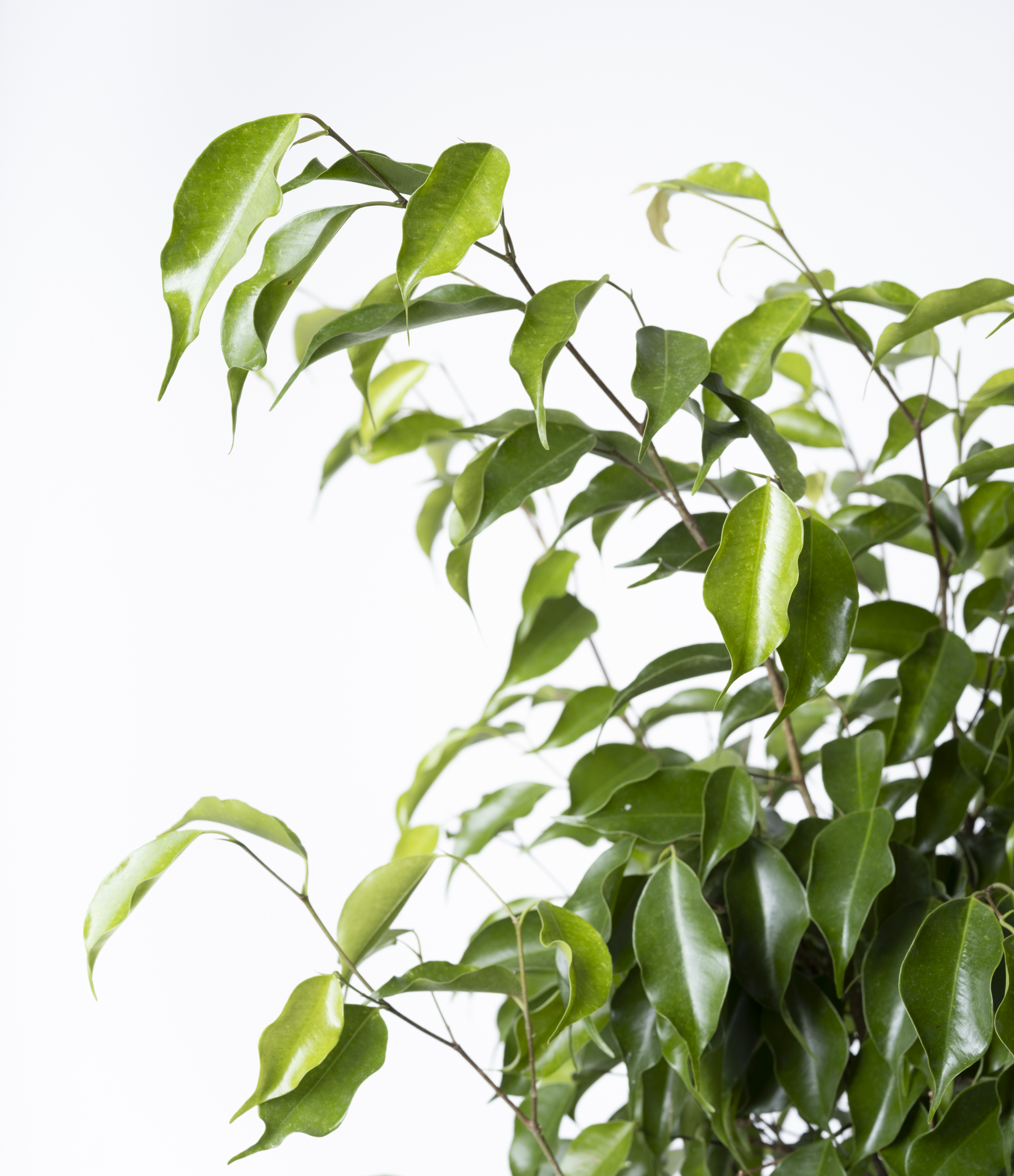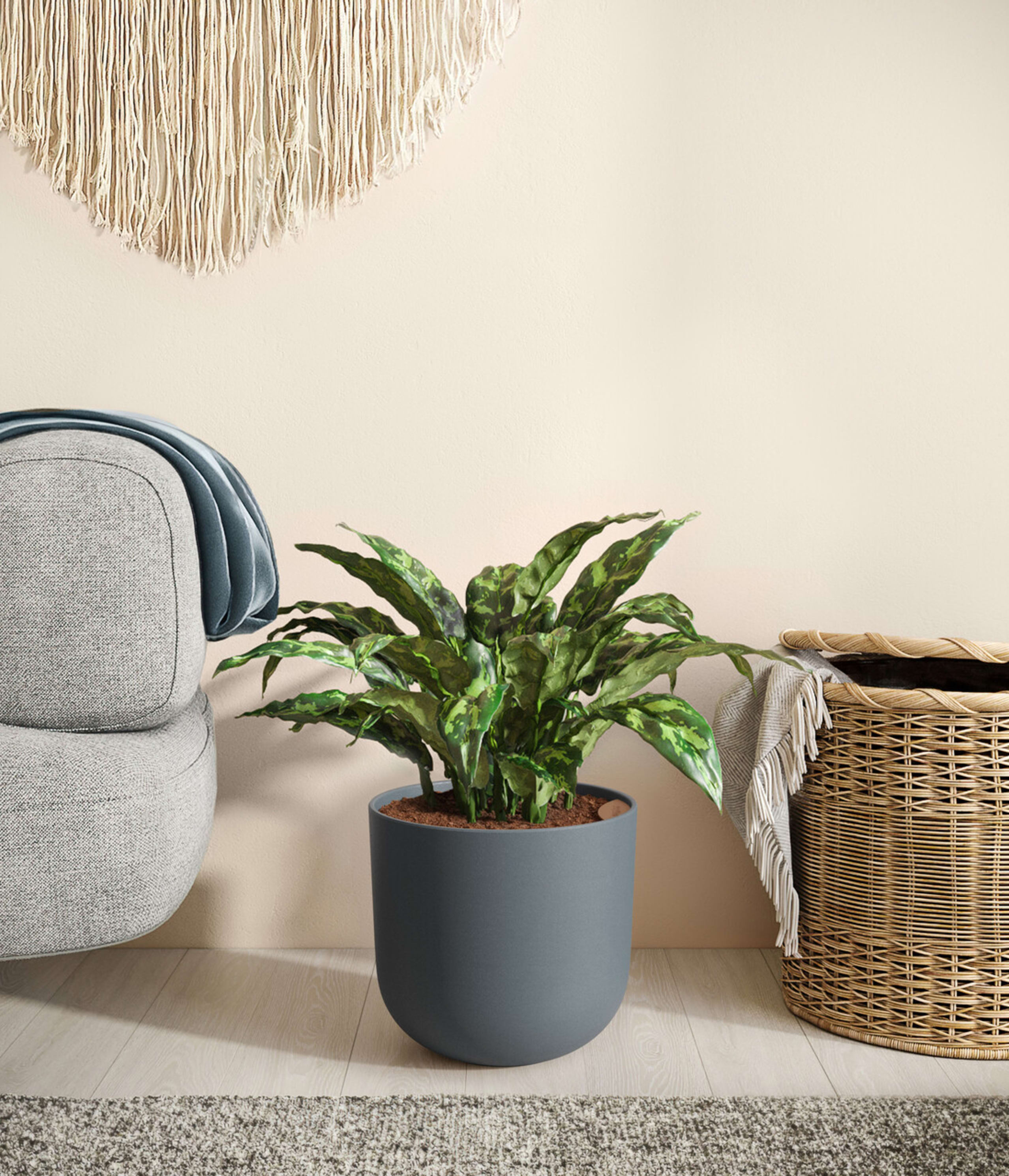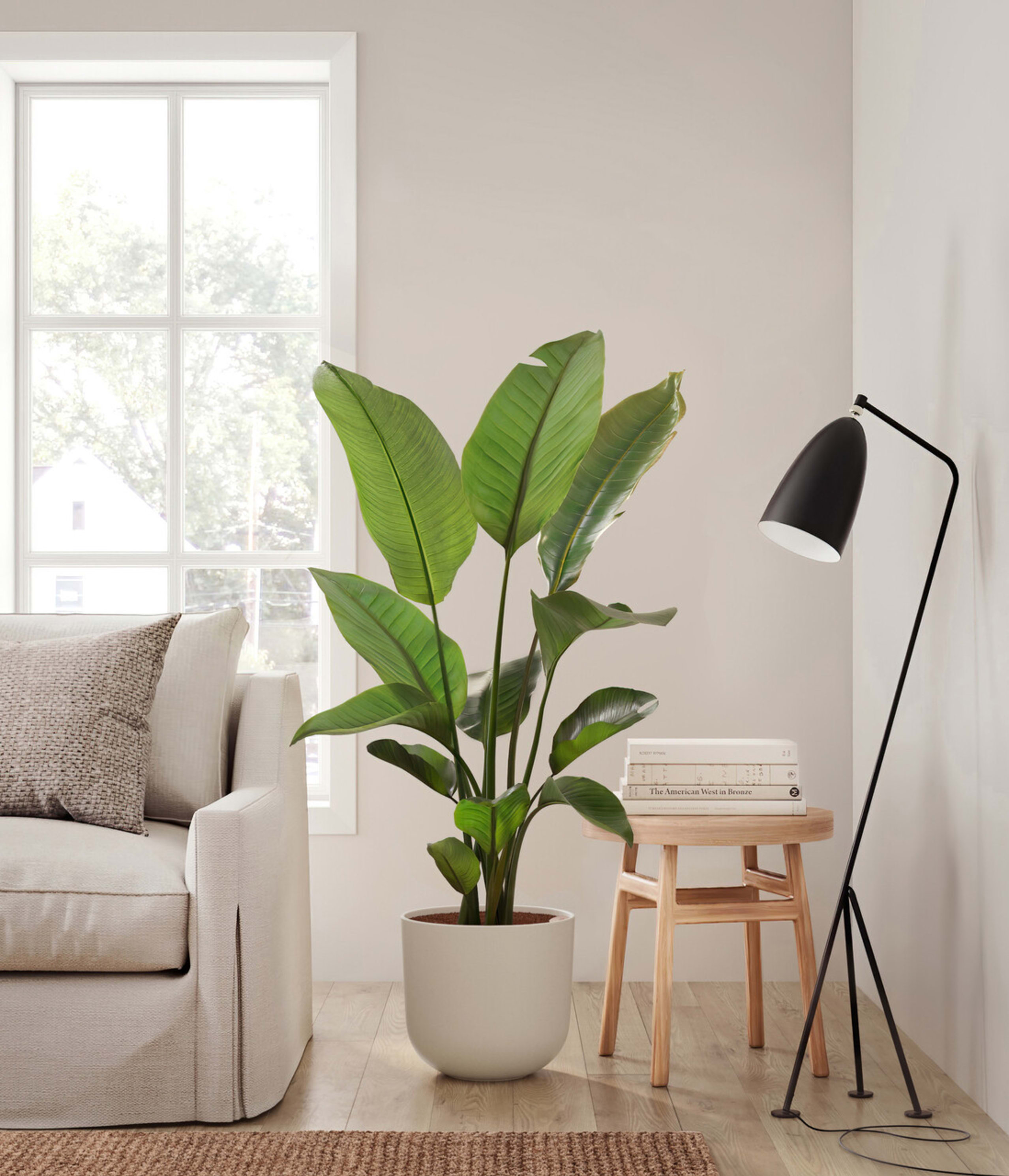How to Care for Ficus Benjamina (Weeping Fig)
About Ficus Benjamina (Weeping Fig)
Native to the lush rainforests of Asia and Australia, Ficus Benjamina, commonly known as the Weeping Fig, is a staple in many homes and offices due to its graceful appearance and air-purifying qualities. Characterized by its arching branches and shiny, dense leaves that gracefully drape downwards, this plant adds a soothing, green presence to any space. It's not just beautiful - its ability to improve indoor air quality makes it a practical choice for enhancing your living or work environment. The Weeping Fig is ideal for those looking to introduce a natural, calming element into their interiors while requiring relatively straightforward care.
How Often Should I Water My Ficus Benjamina?
With Easyplant, watering your Ficus Benjamina is simplified. Make sure to check the Easyplant reservoir once a month and fill it when empty, ensuring your plant receives just the right amount of water without the guesswork. This method helps your Weeping Fig maintain consistent moisture, crucial for its health and leaf vitality.
Ficus Benjamina (Weeping Fig) Light Needs
Ficus Benjamina grows best in a space with bright indirect light, where the sun rays are diffused, and can also adapt to spaces with bright direct light, where the sunlight streams inside directly. Avoid placing it in spaces with low light or spaces without natural sunlight.
Choose a location for your Ficus Benjamina where it can receive plenty of indirect sunlight, such as near a window with sheer curtains or a spot that gets filtered morning sunlight. This kind of lighting environment will help your Ficus thrive, avoiding the extremes of direct afternoon sun that might scorch the leaves or too dark an area that could lead to sparse growth and leaf drop.
Ficus Benjamina (Weeping Fig) Plant Care
During your Ficus Benjamina’s first few days at home, it might experience some initial shedding of leaves. This is a normal adjustment process as the plant acclimates to its new environment. To help it settle in, avoid moving the plant too frequently which can cause stress. Instead, find a suitable spot where the light conditions are ideal and try to maintain a stable environment. For healthy growth, rotate your plant a quarter turn every month. This ensures all sides of the plant receive equal light, promoting uniform growth and preventing the plant from leaning towards the light source. Regularly cleaning the leaves not only keeps your Ficus looking fresh but also improves its ability to photosynthesize efficiently.
How Big Will My Ficus Benjamina (Weeping Fig) Grow?
The Weeping Fig (Ficus benjamina) is a versatile and adaptable tropical plant, making it a popular choice for indoor settings. When grown indoors, Weeping Figs typically reach a height of 6 feet, with a moderate growth rate. This means the plant adds about 12-24 inches to its height each year under optimal conditions. The plant's arching branches and glossy, dark green leaves create a beautiful, tree-like form that enhances any indoor space. Outdoors, in tropical climates, the Weeping Fig can grow much larger, reaching heights of up to 50 feet. It typically takes several years for the plant to reach full maturity, but with proper care, including regular watering, adequate light, and occasional pruning, your Weeping Fig will thrive and maintain its elegant appearance.
Temperature & Humidity
Ficus Benjamina prefers a warm and consistent environment with temperatures ranging from 65 to 75 degrees Fahrenheit. Fluctuations in temperature can be stressful for the plant, particularly sudden drops which might occur near drafty windows or air conditioning units. Humidity levels should ideally be between 40% to 60%, reflecting its tropical origins. In drier climates or during winter months, a room humidifier can help maintain these humidity levels, ensuring your Ficus Benjamina remains healthy and vibrant.
Are Ficus Benjamina Plants Toxic for Pets & Kids?
Ficus Benjamina is mildly toxic if ingested, containing compounds that can irritate the mouth and stomach of pets and cause mild irritation in children as well. To ensure safety, it's advisable to keep the plant in a location that is inaccessible to curious pets and young children.
Troubleshooting Common Problems with Ficus Benjamina (Weeping Fig)
When your Ficus Benjamina adjusts to a new environment, it's natural for some leaves to drop or show signs of stress. If the leaves begin drooping or develop brown spots, this could indicate a lack of sufficient light or inconsistent watering practices. Consider relocating your plant to a place where it can receive bright, indirect sunlight. On the other hand, leaves that appear crispy or start to curl might be getting too much direct sunlight or not enough humidity. In this case, moving the plant to a shadier spot or away from intense light sources can help. Additionally, ensuring that the plant is not in the path of heating vents or air conditioners will help avoid sudden temperature fluctuations that can stress the plant.
Frequently Asked Questions about Ficus Benjamina Plant
- Do Ficus Benjamina need direct sunlight to grow?
No, they prefer bright, indirect sunlight. Direct sunlight can lead to leaf scorch, especially in hotter climates.
- Are Ficus Benjamina difficult to take care of?
Not particularly. They require consistent watering and light conditions but are quite forgiving and adaptable to various indoor environments.
- Will a Ficus Benjamina grow fruit?
It rarely produces fruit when grown indoors. Its ornamental appeal is primarily in its lush foliage.

 Small Plants
Small Plants Medium Plants
Medium Plants Plants Collections
Plants Collections Large Plants
Large Plants Huge Plants
Huge Plants